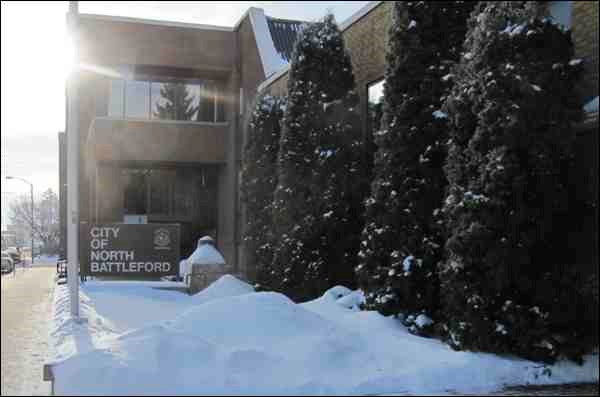City officials are now trying to figure out how to move ahead with a wellness centre application that came before council Monday.
The proposal is from Lifeways Integrative Wellness, who are seeking to set up at a space on 110th Street in what is a Light Industrial District M1 zone.
But their proposed business is not covered under the M1 zone definitions in the zoning bylaw. The proponents sought an amendment to include “wellness centre” as a discretionary use in the M1 zone.
It would be across the street from a proposed paid parking lot on 110th Street; that proposal had come to council again Thursday but was tabled again.
Administration officials had recommended not going ahead with the amendment on the grounds that it might set a precedent to allow “incompatible uses” throughout that zone.
The conundrum facing the city is they also want to see the proposed wellness centre go ahead. City officials have been working with the proponents to find some kind of solution.
Council spent the bulk of their time at Monday’s council meeting trying to figure out how to go forward.
Councillor Len Taylor said he liked the proposal, and actually thought it was a good fit for the 110th Street location. despite the M1 zoning.
“I like this location for it,” said Taylor. “It would serve that part of our community well.”
He suggested maybe looking at the “overall zoning uses for 110th Street and how it fits the overall development needs of the city.”
He suggested perhaps changing the way the area is zoned as a solution, maybe to a mixed-use.
Others on council also liked the proposed business and wanted to see a solution found. But it was made clear by administration officials that accommodating the wellness centre’s request would take some time.
The process of changing a zone from M1 to something else is a lengthy one. City planner Ryan Mackrell explained that process, which he said follows the provincial Planning and Development Act.
“You have to consider the proposal first and foremost,” said Mackrell. “So that’s what’s before council right now.”
Once a decision is made on how to direct administration, a bylaw can be prepared. First reading has to be on its own, and there are two consecutive weeks of public notice followed by a public hearing at a council meeting. After that meeting, it comes back at a future meeting for second and even third reading.
Typically from beginning to end, said Mackrell, “we’re looking at bringing something forward at the end of March.” It takes three months for a text amendment, he said.
As for changing the district from light-industrial to a mixed-use, that is a more drastic change.
“You’re affecting a lot more properties,” said Mackrell. “It has a larger impact on each person there so you want to take that and really consider that thoroughly.”
Bater also asked about spot zoning. Mackrell said he didn’t recommend spot zoning, except for “neighbourhood commercial” where you are looking at small support for a neighbourhood. The strip-mall on St. Laurent, he said, was an example.
“But in commercial and industrial you are usually looking for compatible uses,” said Mackrell. “You want to avoid that spot zone in a large area.”
Councillor Greg Lightfoot wanted to know the impact of a text amendment on the entire M1 zone. Mackrell confirmed every property in the zone would be affected, and that answer worried Lightfoot.
“We could be opening ourselves up to a liability issue,” Lightfoot said, who was concerned about a business possibly setting up beside something that could be hazardous.
It was also noted the wellness centre would be a permitted use in any of the commercial zones of the city.
In the end, the decision of the application was tabled. City manager Jim Puffalt said they would seriously look at the zoning for that particular area. The indication is this may take some time.
In speaking to reporters following the meeting Mayor Bater noted the importance of getting it right.
To have a wellness centre “potentially next to businesses that are forming emissions or other hazards, those may be are nonconforming and may be conflicting uses of property, and that’s what we have to consider.”
The intention going forward is to not only consult with the proponents but also other property owners in the area.
“This is a big process,’ said Bater. “I know that can be frustrating for people especially when they want to see their business going and they want results quickly, but we have a responsibility under the Planning and Development Act as well as we have responsibilities to other property owners nearby because the decisions that we make impact their properties, their value, the use of the properties not just today but well into the future. So these are massive decisions that council can’t take lightly.”




